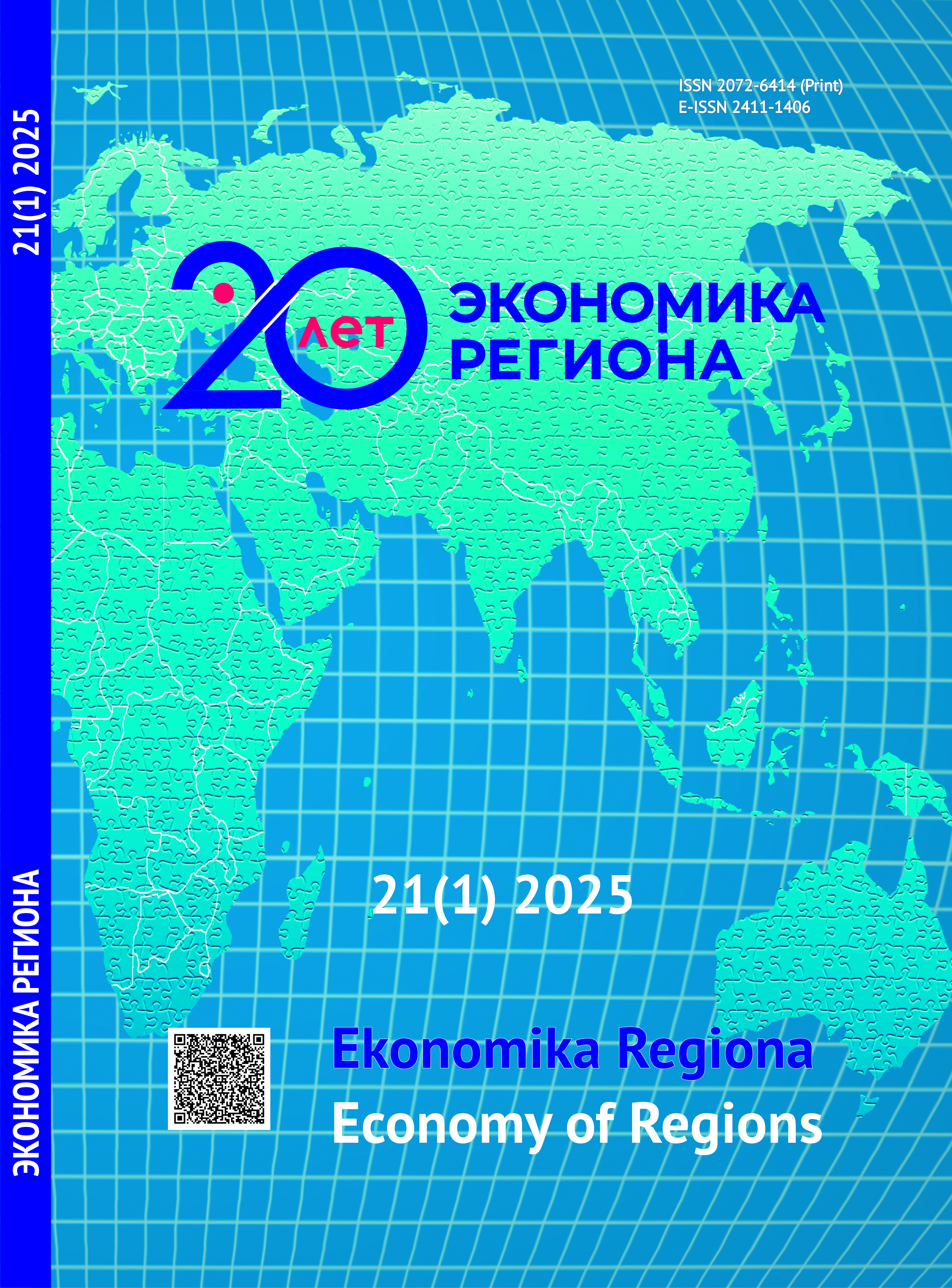The Impact of Smoothing the Economic Inequality through Personal Income Tax on the Differentiation of Tax Revenues in Russian Regions
DOI:
https://doi.org/10.17059/ekon.reg.2025-1-14Keywords:
economic inequality of citizens, differentiation of regions, personal income tax, budget neutrality, tax-free allowance, progressive rateAbstract
Income taxation in Russia has significant potential to enhance the fairness of tax burden distribution. This study aims to assess the potential of tools for reducing economic inequality in Russia through personal income tax (PIT), evaluating their impact on regional tax revenue differentiation while ensuring fiscal neutrality. A scenario analysis of the budgetary consequences for regions was conducted using the current tax levels and five scenarios: three options for a tax-free allowance, an increase in the progressive PIT rate, and a tax reform in 2025. The calculations were carried out using the MS Excel Data Analysis package. Five indicators of variation, differentiation, and concentration of PIT revenues across 85 regions of Russia for 2023 were analysed, generating a dataset of 3.7 thousand indicators. The study found that implementing all proposed scenarios for reducing inequality through PIT would exacerbate the already high regional differentiation in tax revenues. The most effective and budget-neutral scenario for smoothing inequality is the introduction of a tax-free allowance for taxpayers earning less than three minimum wages, benefiting 60 % of the employed population. To compensate for the shortfall in budget revenues, a 35 % tax rate would be needed on incomes exceeding 100 million roubles annually for 25.8 thousand, or 0.035 %, of taxpayers. In this case, the Gini coefficient for citizens’ income would decrease from 0.403 to 0.38. The additional PIT receipts from the 2025 tax reform would enable the introduction of a tax-free allowance equal to the minimum wage for 30 % of taxpayers with incomes below 1.67 minimum wages, reducing the Gini coefficient to 0.388. The negative impact of these scenarios on regional tax revenue differentiation is expected to be offset by consolidating additional federal budget revenue from the increased tax rate, followed by inter-budgetary redistribution to compensate for regional income losses due to the tax-free allowance. The study’s findings are relevant for efforts to redistribute the PIT burden in a way that ensures fairness and reduces income inequality.
Downloads
Published
How to Cite
Issue
Section
License
Copyright (c) 2025 Пугачев Андрей Александрович

This work is licensed under a Creative Commons Attribution 4.0 International License.




